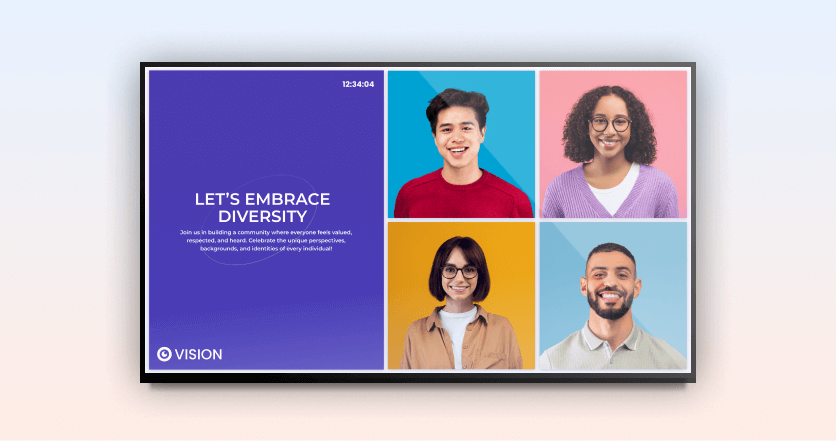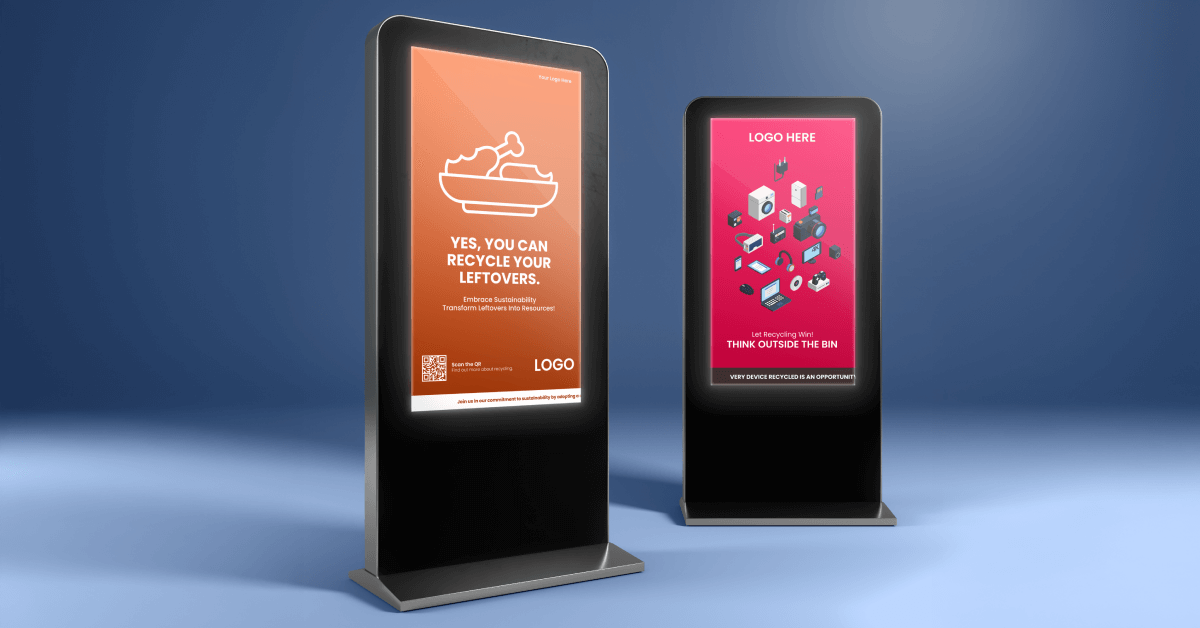Most of you have already heard the term social impact here and there, but do you know exactly what it is and why you should consider it? Social impact, in simple words, means doing something that helps people, communities, or the environment. It can be about making spaces more inclusive and accessible for everyone, protecting the environment, or building stronger communities where people are truly connected to one another, surpassing differences. In one phrase, it’s about making a positive difference!
Now, there are multiple ways to do it, but in this article, we’ll discuss one: Digital signage. When we talk about communication, digital signage is one of the most powerful tools that can successfully deliver any message you want. And what’s better than a message that brings positive social change?
First, let’s have a look at different types of social impact in different industries and then what it takes to make it happen.
What social change looks like across different industries
Social impact doesn’t look the same everywhere. Different industries face different challenges, and digital signage can help in many unique ways.
Equality and inclusion
In offices, schools, and public spaces, signage can be used to highlight diversity, equity, and inclusion (DEI) initiatives. Think about employee spotlights, inclusive language guides, or reminders about accessible facilities. Even small touches, like pronoun awareness or celebrating cultural events, can create a more welcoming environment.
In retail and customer-facing spaces, digital signage can promote fair hiring practices or supplier transparency. It’s a way to say, “Here’s what we stand for”, loud and clear.
The environment
Sustainability is on everyone’s mind these days, as it should be, and digital signage helps you walk the talk. You can display real-time energy usage, promote green habits (like using reusable products), or guide people to recycling bins.
And let’s not forget that replacing printed posters with screens saves paper, ink, and waste. That alone can have a big environmental impact over time.
Community engagement
In public spaces like libraries, city centers, or transit hubs, digital signage becomes a tool to connect people. Local events or volunteer opportunities can be promoted and spread the word through engaging digital displays that will encourage people to take action.
In healthcare or education, signage can guide, inform, and even comfort. It’s not just about pushing information; it’s about helping people feel seen and supported.

Start with a plan
Every meaningful effort should start with planning if you want to achieve a good result, especially when you want to see a change. When discussing change in social impact, you should consider one of the most popular planning frameworks: The Theory of Change (ToC). It’s all about figuring out your end goal (like more equal access to education or reducing carbon emissions), then working backward to figure out how you’ll get there. It connects the dots between actions and outcomes.
Once you’ve prepared your impact strategy, you’ll need the right tools to make it happen, and that’s where digital signage can help.
Digital signage gives you a powerful, flexible way to communicate your message clearly and in real-time. It’s visible and visual and requires no extra effort from the people who see it. Just walk by, and you get the message. That’s why it’s such a natural fit for social impact work.
Why digital signage works so well
So, why does digital signage work so well when it comes to social impact?
- First, it’s instant. You can change messages in real-time. If there’s a local event tonight or an important update to share, it can be on every screen in minutes.
- Second, it’s visual and engaging. People process images and videos way faster than text. A 10-second animation about how to properly recycle is more effective than a wall of words.
- Third, it can be everywhere. From lobbies to lunchrooms, break areas to bus stops, screens are in places where people naturally spend time. That means your messages get easily seen.
Digital signage can also be tailored. For example, you can speak differently to employees than to customers. With the right CMS, you can highlight different causes in different locations. It also gives you the opportunity to use customizable templates that match your organization’s style guidelines and make your content look polished without extra design work.
Most importantly, it’s measurable and interactive. With an intelligent digital signage platform, you can track what’s playing, when, and how often. You can test different messages and see what works. Additionally, features like interactive kiosks let you gather feedback directly from your audience, while with social media walls, you can encourage engagement and build a sense of community. This two-way communication helps turn viewers into participants, which is key when you’re trying to create real, lasting change.

In the end, it’s more than just a screen
Digital signage might not sound revolutionary at first, but in the right hands, it absolutely is. It’s a platform for sharing values, educating people, and building connections. It meets people where they are and invites them into something bigger.
Whether your goal is to promote sustainability, support equality, or bring people closer together, digital signage is one of the most useful tools you’ve got, and it can drive real change.
